The Best 3-Day Cusco Itinerary with Sacred Valley Day Trip

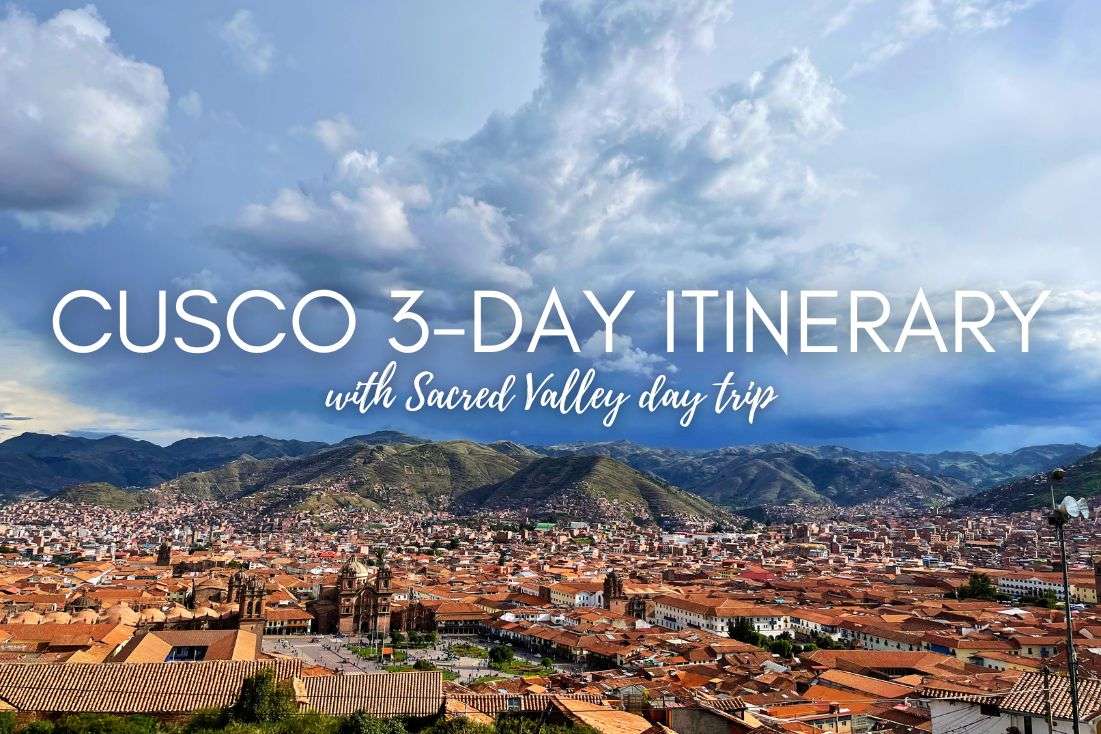
Cusco is the oldest continuously inhabited city in the Americas, and, from the 13th to 16th centuries, it was the capital of the Inca Empire. The entire incredibly scenic area to the north of Cusco is called Sacred Valley. It’s the roughly 60 km (37 mi) section between Pisac and Ollantaytambo towns where the Urubamba River cuts into the Andes Mountains. Learn more about Peru.
I’m sorry to break it to you, but if you only have 3 days in Cusco and Sacred Valley, you'll definitely miss out on some seriously amazing places. But hey, I’ll be a silver-lining kind of guy and pack this Cusco itinerary to the brim so you can see it all. We're talking an action-packed 3-day Cusco itinerary that’ll have you exploring every nook and cranny, from the bustling streets of Cusco to the awe-inspiring Sacred Valley.
That’s because, if you're searching for what to do in Cusco for 3 days, you're probably aiming to cover not just the city itself but also the gems scattered around the Sacred Valley. Fun fact: this valley was like the Beverly Hills of the Incan Empire—plush terraces, stunning views, and all the llama drama you could handle. So, while I can’t quite squeeze in every site, I’ll cover Cusco’s highlights and a whirlwind Sacred Valley day trip faster than you can say “altitude sickness.” (Pro tip: Drink coca tea and don’t eat meat. Trust me.)

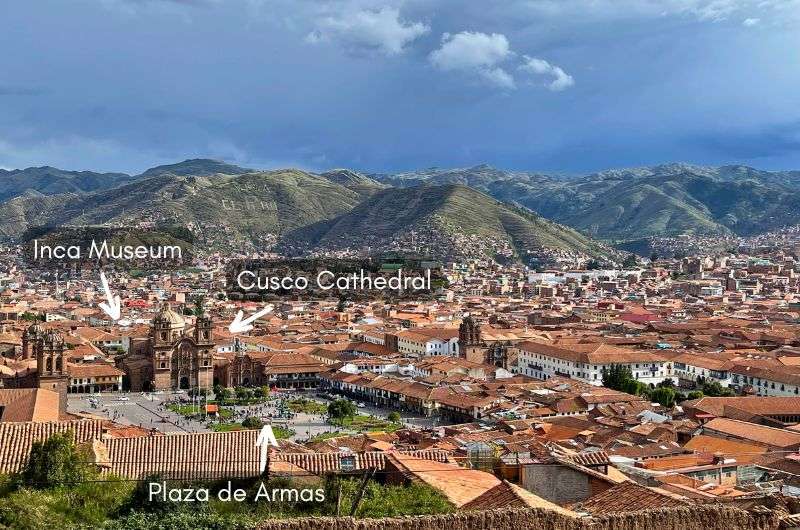
On the first day we'll explore all the cool attractions around Plaza de Armas
Your itinerary for 3 days in Cusco:
Here’s how to spend 3 days in Cusco on the best itinerary:
Day 1: Cusco Historic Center
Stop 1: Inca Museum
Stop 2: Plaza de Armas
Stop 3: Cusco Cathedral
Stop 4: Inca Rock Street and 12-Angled Stone
Stop 5: San Cristobal Viewpoint
Stop 6: Sacsayhuaman Inca site
Day 2: Cusco Inca Ruins and Museums
Stop 1: Museum of Pre-Columbian Art of Peru
Stop 2: Coca Museum
Stop 3: Qoricancha (Temple of the Sun)
Stop 4: Qenco (Inca ceremonial site)
Stop 5: Tambomachay (Water Temple)
Stop 6: Puka Pukara (Red Fortress)
Day 3: Cusco to Sacred Valley Day Trip
Stop 1: Pisac (Inca ruins and market)
Stop 2: Chinchero (traditional weaving village)
Stop 3: Maras (salt terraces)
Stop 4: Moray (experimental agricultural terraces)
Stop 5: Ollantaytambo (Inca fortress and village)
Sometimes, all you need to do is take the first step... I've filtered out the best hotels in Cusco for you
Save it for yourself to come back to later, or share with your friends on social media!
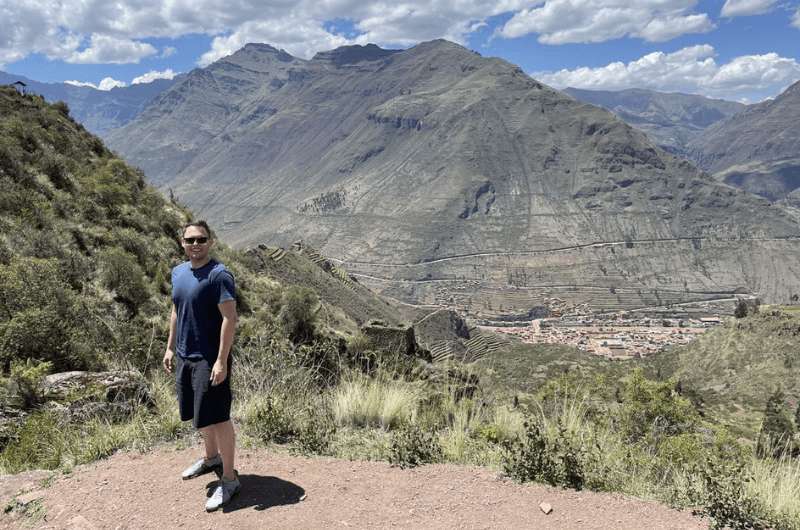
Me, ador(n)ing Sacred Valley
How many days in Cusco is enough?
Cusco is one of the few cities in South America that is worth 2 full days minimum. You can see the historic city center, some museums, and the nearby Inca ruins in 2 days in Cusco. 3 days will allow you to add a day trip to Sacred Valley (like I did on this itinerary) or opt for a trip to Rainbow Mountain instead. I did that when I visited, since I had more time in Sacred Valley afterwards.
Map of Cusco and Sacred Valley
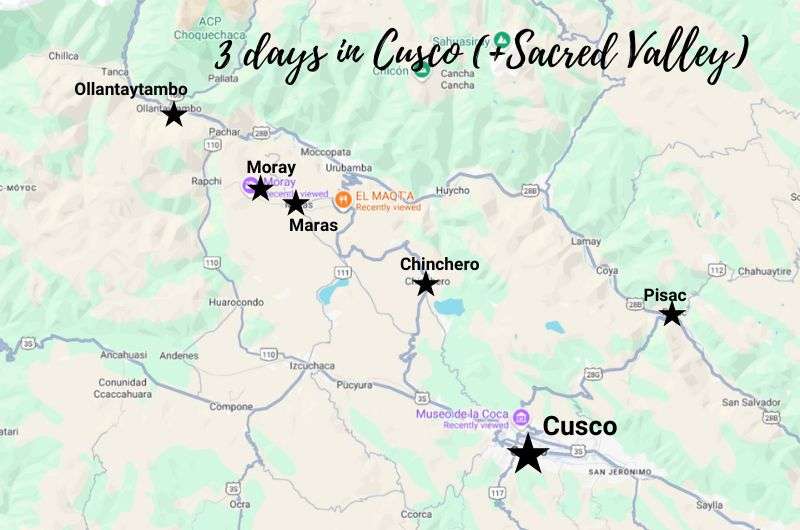
Ladies and gentlemen, a map showing stops on your perfect Cusco itinerary! Sacred Valley day trip included!
Best tips before you go to Cusco, UNESCO World Heritage Site:
- You need 2 full days to see Cusco. Visit the historic center first to learn about Inca culture in the museums, add the closest Inca sites, and then head our on a Sacred Valley day trip on top of that.
- Cusco’s altitude is 3,400 m (11,000 ft), so you will need to get used to the thinner air and may deal with altitude sickness. Try to take it easy on your first day to acclimatize.
- Or, better yet, add another day in Cusco and take an acclimatization massage at the Hilton Garden Inn Cusco! If you’re anything like me, the altitude will make sightseeing epically hard.
- Buy a Cusco Tourist Ticket. You can’t see most places on this itinerary without it.
- Rent a car to get around Sacred Valley. It’ll also come in handy when visiting the Inca sights around Cusco.
- Meat and altitude sickness don’t mix! I learned that the hard way. Also, coca is your friend. Yes, you’ll test positive for cocaine on a drug test, but it helps a lot and is legal in Peru.

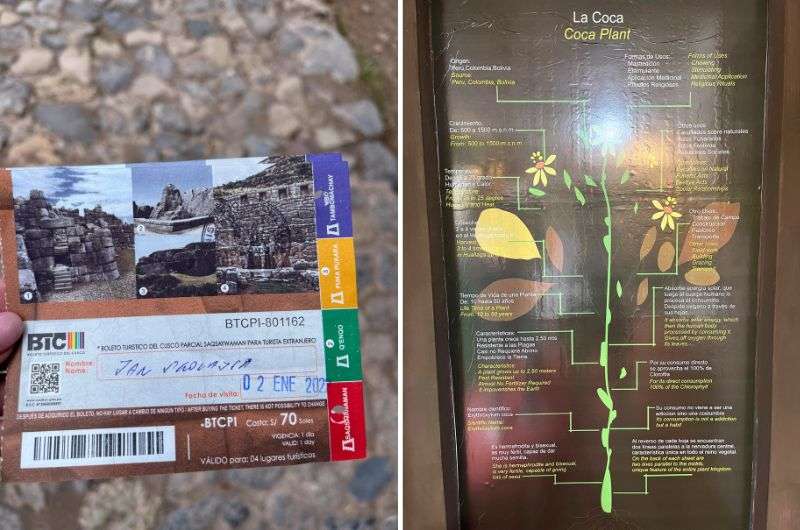
Don’t forget to buy your Cusco Tourist Ticket and remember, in this altitude, La Coca is your best friend!
Don’t visit Machu Picchu as part of this itinerary
Machu Picchu is a whole other beast—a wonderful, unmissable one at that! But the Inca city is not part of this Cusco itinerary. Why? You ideally need an extra 2 days for Machu Picchu, and if you were to cram it into an itinerary for 3 days in Cusco that also hopes to take you through Sacred Valley, well, that would be impossible. You’re already cutting it very short on time in the Sacred Valley and missing a lot of incredible spots, don’t skip even more! Machu Picchu is the no. 1 place to see in Peru (even by my very high standards!), so don’t rush through it.

And, just in case you were wondering, you don't have time to visit Rainbow Mountain this time around, either. It's a full-day trip. Here is my article dedicated to Rainbow Mountain.
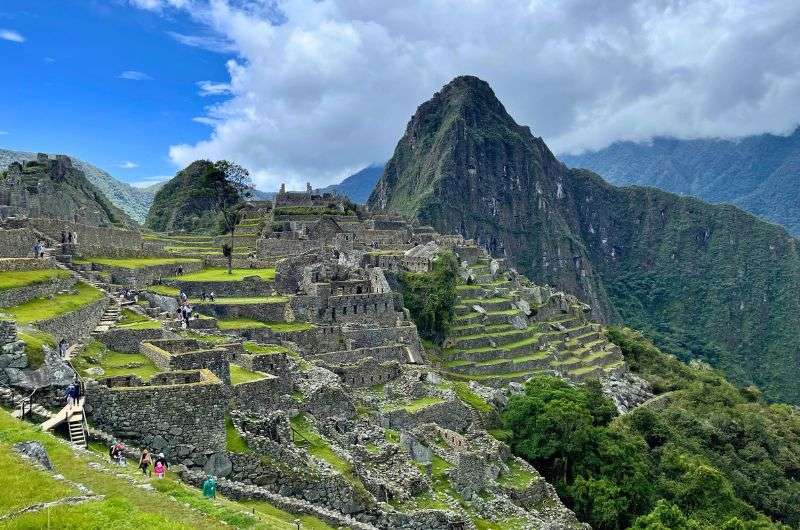
This gem deserves its own dedicated time so you can explore it to the fullest
Where to stay in Cusco: Hilton Garden Inn
I recommend only staying in international hotel chains in Peru, because everything else is hit and miss. This isn’t my usual tip, on the contrary. But in Peru, I felt like a Hilton Hotel representative.
In Cusco, I stayed at the Hilton Garden Inn. And I loved it! Can you blame me? It has super comfortable beds, a wonderful staff, views to die for, and peace and quiet. Add one of my favorite restaurants in all of Peru, the Garden Grille, and you can’t choose a better place to stay in Cusco.
And bonus! This Hilton offers a special acclimatization massage. I’ll be mentioning Cusco’s altitude shortly, so you’ll know what I mean when I say this massage is a godsend.

Renting a car in Cusco: Beware of scammers!
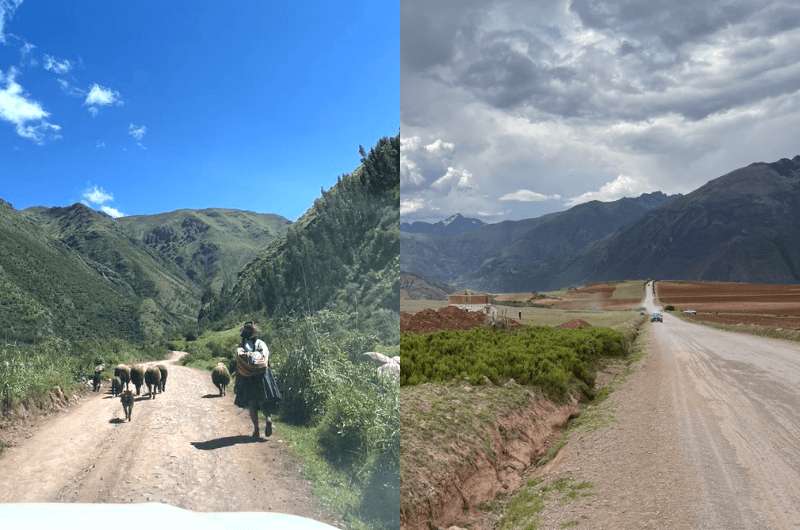
Roads are used not only by drivers
My tip is to rent a car in Cusco, at least for the Sacred Valley portion of your trip. Do so at Alkila Rent a Car, the only rental company in Peru that didn’t try to scam us. It’s local, so that can warm your heart as well. The international companies in Peru are a joke, we had multiple bad experiences with them.
Getting from Cusco airport to city center
The Cusco airport (CUZ) is located 5.5 km (3.4 mi) from the historic center of Cusco. It takes about 20 minutes to drive the distance to Plaza de Armas. You can use the Cabify app to sidestep the taxi mania at the airport. Alternatively, look for the Llama Taxi desks after baggage claim to get a taxi for PEN 55 (USD 15). If you want to be more adventurous than that, go ahead and start negotiating with the plethora of taxi drivers right outside arrivals. They start their offers at PEN 30, which is way above the actual going price of about PEN 15 (USD 4).
If you were on an early morning flight in, you could count today as one of your days in Cusco... but otherwise you'd do yourself a favor if you counted on spending 2 full days in Cusco and not trying to fit it all into your travel day.
Getting around Cusco and Sacred Valley
I rented a car when visiting Peru and would recommend it to you too. Driving in Peru is not really as bad as you’d think… most of the time. Read details here:

If you don’t want to drive at all in Peru, get a driver to take you on the trip through Sacred Valley. Ask your hotel reception to help you set the deal up.
What you don’t want to do is just take a taxi to an Inca site and then let it leave—there won’t be any taxis waiting there when you are ready to move on! You could end up paying ridiculous money for someone to come save you. Always pay for your own taxi for the entire day.
To explore Cusco, you will be walking through the narrow streets a lot, so there’s certainly no need for a car at all times. Just be ready for some walking uphill!
Alright then, now you’re ready to head out on your 3 days in Cusco itinerary!
Day 1 of Cusco itinerary: The best of Cusco’s historic center + Inca Museum
See this route with all the stops in Google Maps
Main sites visited on day 1: Inca Museum, Plaza de Armas, Cusco Cathedral, Inca Rock Street and 12-angled stone Cusco, San Cristobal Viewpoint, Sacsayhuaman Inca site
Restaurant tips: Uchu Peruvian Steakhouse | Garden Grille in the Hilton Garden Inn Cusco | Organika
Hotel recommendations: Hilton Garden Inn Cusco
Further reading: Top 10 Things to Do in Cusco
Cusco is one of the very few cities in the Americas that I think warrant a two-day stay and is one of the absolute top spots you can visit in Peru. A day in Cusco just isn’t enough—you seriously need to get yourself some more vacation days if you’re trying to cut down on time in Cusco.

Day 1, stop 1: Inca Museum (Museo Inka)
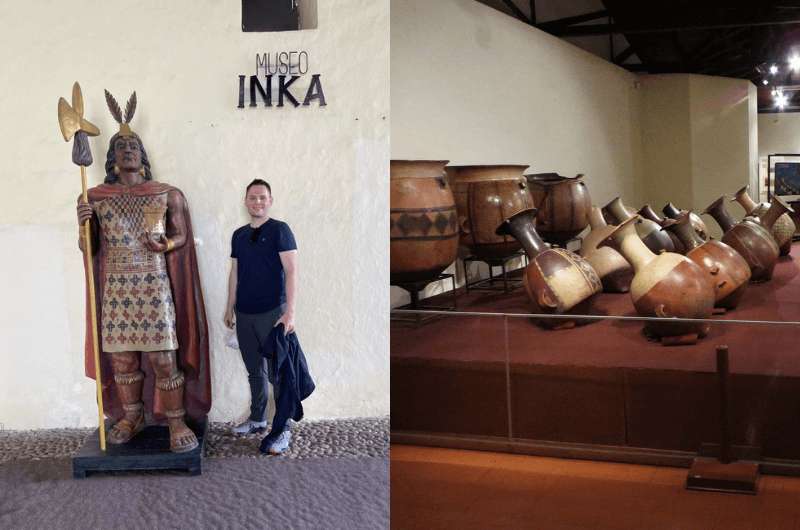
A very un-authentic statue in front of the Inca Museum and some very authentic receptacles from inside the museum
- Time spent here: 1.5 hours
- Opening hours: Monday to Friday 9:15 am–4 pm, Saturdays 8:45 am–1:45 pm
- Price: PEN 20 (USD 5.30)
Your first stop in Cusco is the perfect time to learn historical insights and interesting facts at the Inca Museum (Museo Inka). The Inca Museum is a treasure trove of Inca artifacts, offering a glimpse into the lives of this fascinating civilization. Inside, you'll find everything from intricately woven textiles and pottery to metalwork and mummies. Yes, actual mummies! The museum houses a collection of well-preserved Inca ceramics and tools, giving you a firsthand look at their craftsmanship and daily life.
One of the highlights is the collection of quipus—these are the knotted strings the Incas used as a record-keeping system. Imagine trying to keep track of your finances with a bunch of knots! And don't miss the scale model of Machu Picchu, which gives you a mini-preview of the grandeur you'll be seeing later.
Tickets can only be bought in person and in cash, so bring money and yourself. We opted for a guide and were very happy we did because the museum isn’t really that great when it comes to signs in English. Our guide was knowledgeable and entertaining and really made our visit worthwhile. Expect to pay PEN 100–200 for a guide.
We were in and out in about 1.5 hours, which is just enough time to get a solid foundation of Inca history without feeling overwhelmed. Plus, it's a great way to enrich your experience when visiting all those incredible ruins in Cusco and the Sacred Valley later on.
Now on to the main square: Plaza de Armas!
Day 1, stop 2: Plaza de Armas and Cusco Cathedral
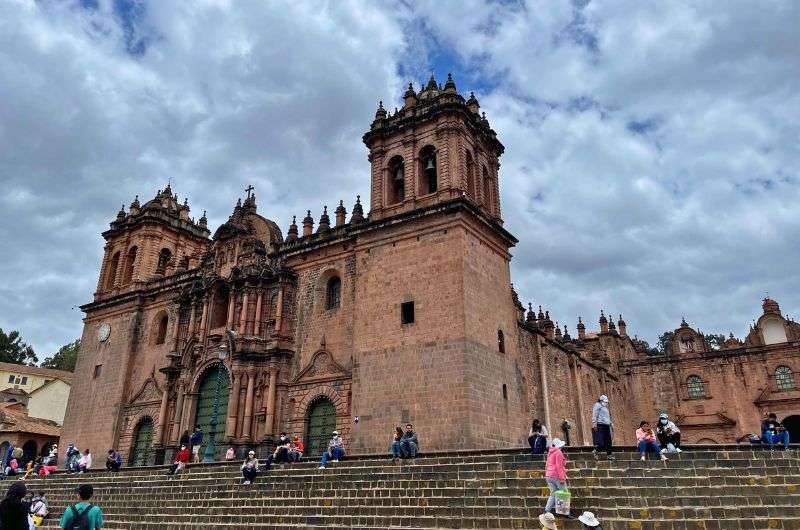
Cusco Cathedral
- Time spent here: 1.5 hours
- Opening hours for the cathedral: Daily 6 am–8 pm
- Price: Tickets cost PEN 30 (USD 8) and include Cusco Cathedral, San Blas Temple, the Archbishop’s Museum, and San Cristobal Church. Buy in cash at any entrance, and take your passport.
After the museum, walk over to the Plaza de Armas, one of the nicest central squares I’ve seen in South America. It’s only about half the size of the original Inca square that the Spaniards took over, but it remains a central social hub, and, nowadays, a tourist hub as well. You’ll want to wander around a little bit and take in those Cusco vibes.
Next, head into the massive Cusco Cathedral. It has three parts and includes a museum with hundreds of artifacts, sculptures, and paintings, the most famous of which is Marcos Zapata’s Last Supper where guinea pig is served as the main course. How very… local!
Fun fact: There's more to this painting than first meets the eye: You'll notice that Jesus and 11 of his disciples are depicted with white faces, while Judas is shown with a darker complexion similar to the indigenous Incas. This was a deliberate choice by the Spanish colonizers, using art to push their narrative. By painting Judas to resemble the Inca people, they were sending a not-so-subtle message, associating betrayal with the indigenous population. It's a reminder of how religion and art were used as tools of colonization to assert dominance and reshape the identity of the native people.
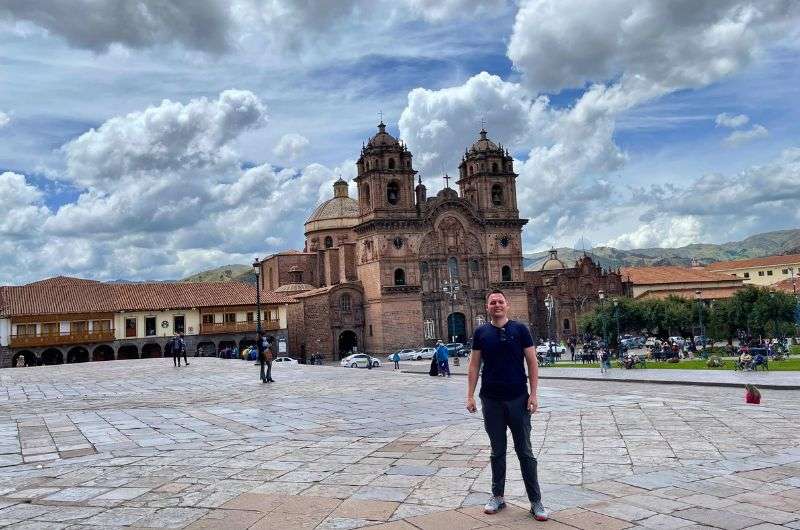
Just me, hanging out on Cusco’s Plaza de Armas
My tip is to get a guide in the cathedral. You’ll need to do a mini-casting right on the spot—try to choose one whose English you actually understand. A simple question or two before you book them should help you select your person. The fee is “voluntary” and usually falls in the PEN 50–100 (USD 13–26) range. Having a guide will also give you deeper insight into the artwork and its historical context, making your visit all the more meaningful.
Lunch on day 1 in Cusco
By this point, you’ll have worked up an appetite. Luckily, Cusco has some fantastic restaurants. We stumbled into Uchu Peruvian Steakhouse by accident and had the best chicken of our lives.
Or, if you enjoy markets for reasons completely unfathomable to me, you could try your luck at San Pedro market, Cusco's main food market. It’s close to Plaza de Armas.

Day 1, stop 3: Cusco's Inca Streets and the Legendary 12-angled stone
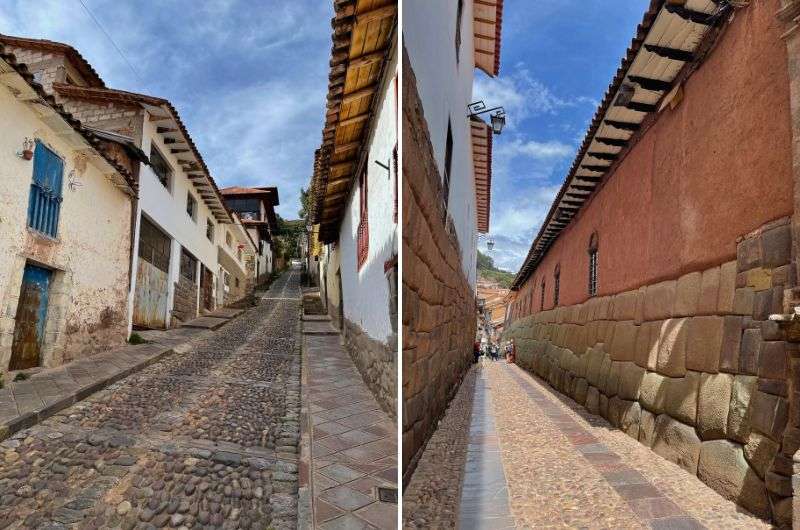
These streets show the Inca’s amazing craftsmanship
- Time spent here: 30 minutes
You’ll want to take at least half an hour to stroll through the side streets of Cusco's Old Town. Make sure to spend part of your afternoon exploring Calle Hatunrumiyoc and Calle Inca Roca, aka Inca Rock Streets, where you'll encounter the famous Inca walls made of precisely cut stones that fit together so seamlessly, you can't even slip a piece of paper between them.
What is the stone with 12 corners?
Most importantly, notice the celebrity of the streets: the 12-Angled Stone on Calle Hatunrumiyoc. I (and just about every tourist that remembers to notice it) found this rock star of Inca masonry fascinating for its 12 perfectly fitted angles. How they managed this without modern tools is anyone’s guess—aliens, maybe?
But seriously, it shows the Incas’ incredible craftsmanship and understanding of engineering. You’d almost think they were as smart as me! It’s not often I stand and stare at rocks up close, but in Cusco, you’ll always see people studying the walls up close. It’s kind of funny really.
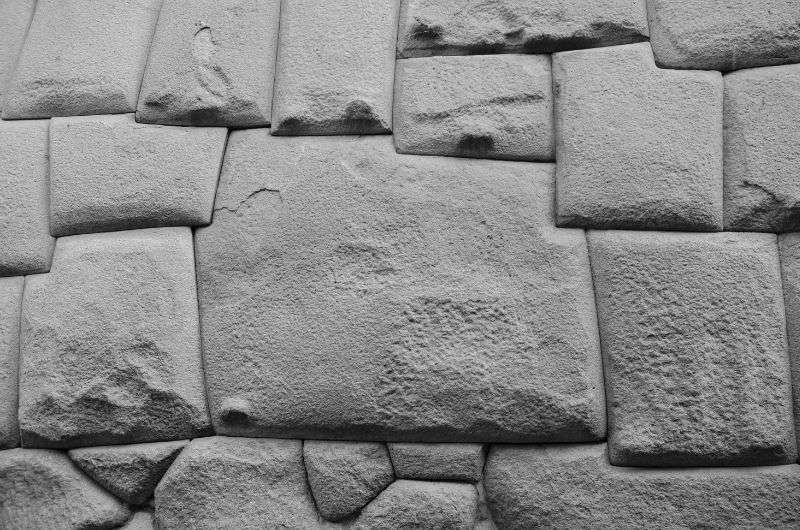
The 12-Angled Stone up close
The way the rocks are cut was the Inca version of seismic insurance. The multiple angles help distribute weight and provide flexibility, so when the earth starts shaking, the walls don’t come crumbling down.
All these centuries later, it’s clear they knew what they were doing—especially when you compare them to the Spanish colonial walls. Most of those have crumbled after centuries of earthquakes, while the Inca walls are still standing strong, practically unfazed. I love that for them.
Day 1, stop 4: San Cristobal Viewpoint
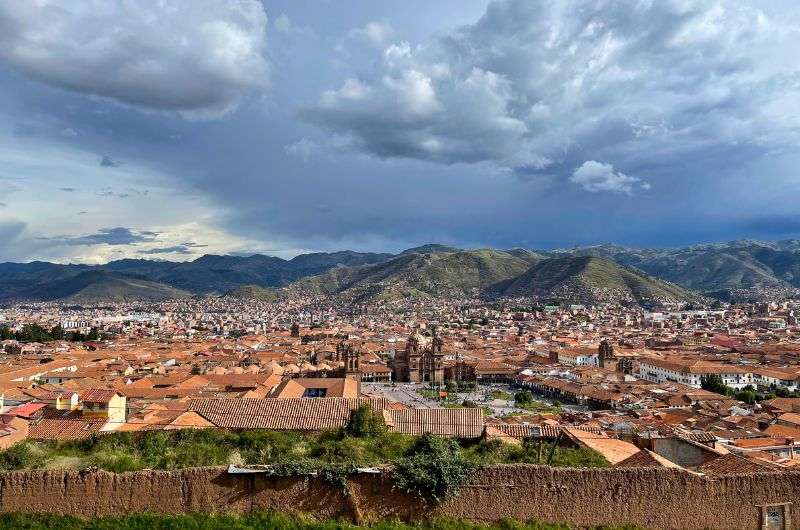
The best views in Cusco are from San Cristobal Viewpoint
- Time spent here: 20 minutes
Now it’s time to remember you’re in a mountain valley! You’ll climb up to the viewpoint at San Cristobal Church and ooh and aah over the view in front of you: the Plaza de Armas surrounded by the red rooftops of Cusco, bordered by the magnificent Andes in the background. Priceless!
It’s a short (15 minutes max) but steep walk from Plaza de Armas. Your ticket from Cusco Cathedral automatically gets you into the San Cristobal Church if you’re interested. It’s nothing that special, the views of Cusco are the real attraction here.
Getting tired? Given Cusco’s altitude, you might be so tired by now that you’ll want to just slowly wander back to the comfort of your hotel. Perhaps take that acclimatization massage at the Hilton Garden Inn and then stare out at the Cusco views from the restaurant windows.
But if you can keep going, I have one more stop for your first day in Cusco:
Day 1, stop 5: Sacsayhuaman Inca complex
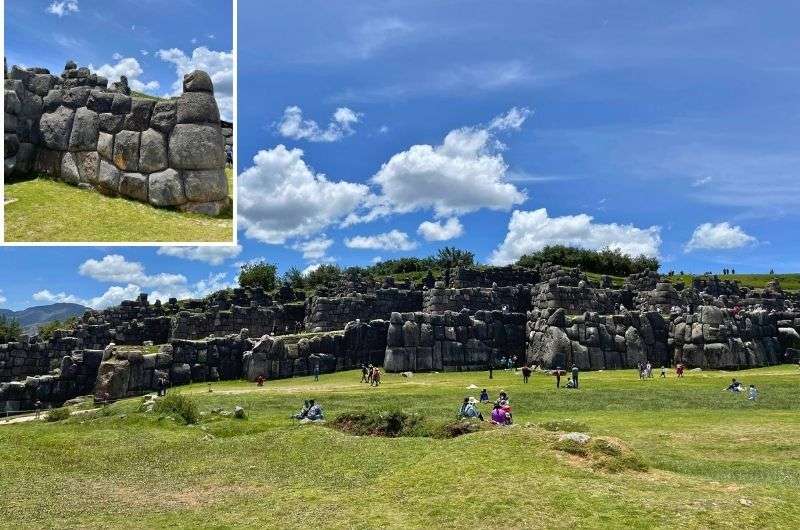
Sacsayhuaman Inca complex. I still can't figure out how they managed to get so many rocks up to this altitude???
- Time spent here: 1.5 hours
- Opening hours: Open daily 7 am–5:30 pm
- Price: Tickets are not sold separately. You need the Cusco Tourist Ticket Circuit 1
The last thing to see in Cusco (for today) is Sacsayhuaman (also spelled Saqsaywaman). It used to be an important fortified Inca complex, so it sits atop a steep hill, conveniently right above the San Cristobal viewpoint. No surprise there—this itinerary is extremely well-thought-out (by me).
You’ll need 25 minutes to walk there from the viewpoint and about an hour to tour the sight, so it’s still doable before they close at 5:30 pm if you aren’t epically slow. If you are, you could do this in the opposite order and visit the viewpoint last before heading back to your hotel.
Sacsayhuaman is a massive site with not only Inca ruins but also great views of Sacred Valley and even Ausangate, the sacred mountain of the Incas.
Tip: In case you’re a serious hiker, note that you can hike Ausangate over a 4–6 day hike. Read about the trek in my article about the best day trips from Cusco (though this one, obviously, takes more than a day).
The most fabulous spot at Sacsayhuaman is the central plaza, which is where ceremonies were likely held. It could fit thousands of people at once. The massive stones used in the walls surrounding the plaza are some of the largest used in any site in the Americas. The logistics of getting the stones to Sacsayhuaman from 20 km (12.5 miles) away is still a mystery to this day. Even to me, and I gave it a good ponder.
Here’s my hypothesis: either the Incas had some ingenious stone-rolling techniques or they found a way to harness a small army of llamas with super strength. Or, maybe they just knew a few magic words that made stones glide across the landscape (Harry Potter, is that you?). It’s either that, or they were on such good terms with the gods that the stones just wanted to cooperate. Whatever the method, it clearly didn’t involve any cranes or trucks. I’m going with option two—those llamas were way more buff back then.
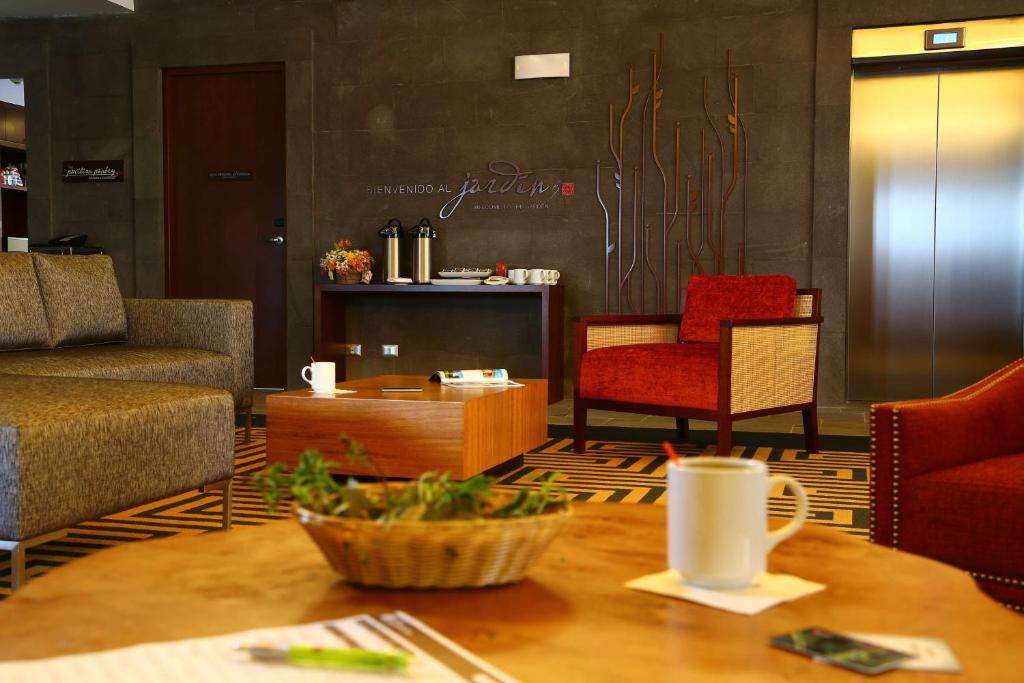
Day 2 of Cusco itinerary: Art, coca, and Qoricancha
Here are today's stops in Cusco + you’ll need transport for the Inca ruins in the afternoon (but they are right outside Cusco)
Main sites visited on day 2: Museum of Pre-Columbian Art of Peru, Coca Museum, Qoricancha, Qenco, Tambomachay, Puka Pukara
Restaurant tips: Uchu Peruvian Steakhouse | Garden Grille in the Hilton Garden Inn Cusco | MAP Café and Restaurant
Hotel recommendations: Hilton Garden Inn Cusco
Further reading: 10 Best Day Trips From Cusco
Day 2, stop 1: Museum of Pre-Columbian Art of Peru
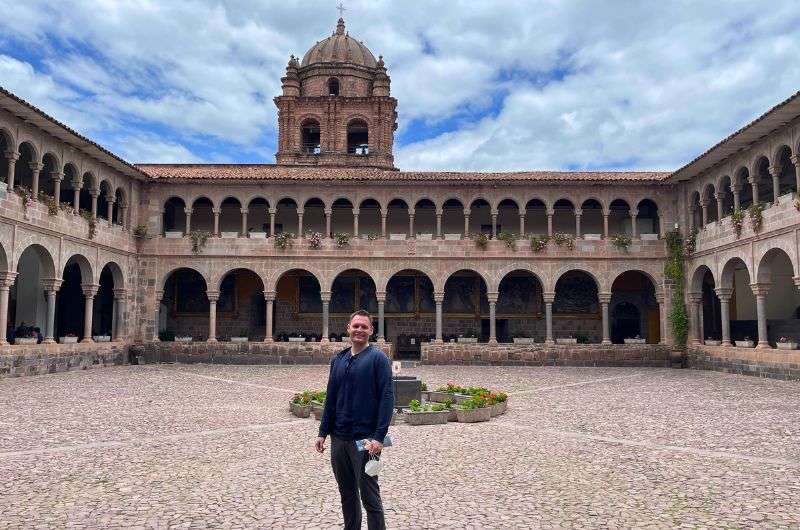
A handsome and educated tourist visiting the Museum of Pre-Columbian Art of Peru
- Time spent here: 1 hour
- Opening hours: 9 am–10 pm
- Price: PEN 20 (USD 5)
- Official website: Museum of Pre-Columbian Art of Peru
First up on your Cusco itinerary today: a little more Inca education. You can’t continue exploring any more of Cusco or go on a Sacred Valley day trip (coming up tomorrow!) without learning about the culture that made you even consider Peru as your vacation destination.
Head over to the Museum of Pre-Columbian Art of Peru right by the Plaza de Armas. It’s part of the Museo Larco group (the Museo Larco that knocked our socks off in Lima), meaning it’s very modern and up to European museum standards and it blew me away when I visited.

The museum collection is divided into 10 rooms by civilization and by material used (like wood, silver, and shell). It spreads over 2 floors, but it’s not big, you can get through in about an hour. There’s plenty of English signage so you can read about what you’re looking at—no guide is needed for this one.
Tip: If all the cultures that makeup Peru’s history fascinate you, you might want to take a look at my article about Peru’s most amazing ruins to visit. But don’t blame me if you are overwhelmed with everything you want to see and can’t fit it into your American PTO days!
If you get hungry, you can grab some lunch at the MAP Café and Restaurant, which is basically a glass box in the museum’s courtyard. It serves (pricey) contemporary Peruvian dishes in a cool setting. Not your typical museum bistro, that’s for sure, but a good option if you don’t care to walk to any of my other favorites.
Day 2, stop 2: Coca Museum
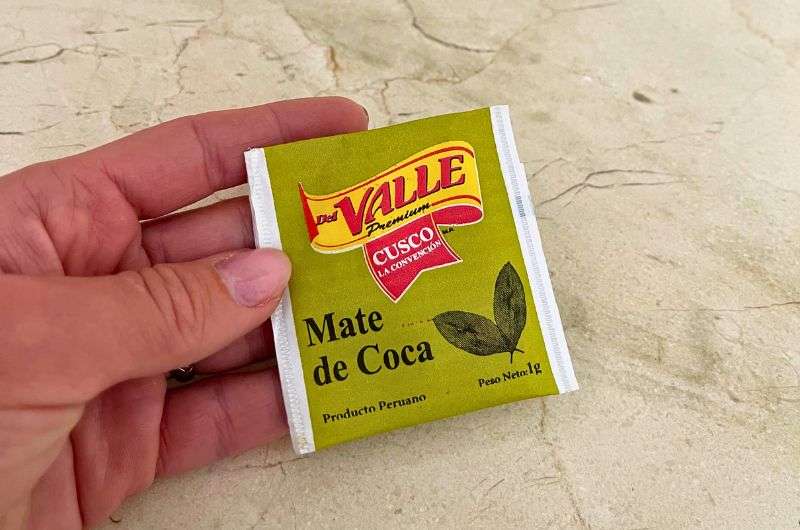
A cup of coca tea, anyone? It helps with altitude sickness!
- Time spent here: 45 minutes
- Opening hours: Open daily 10 am–6 pm
- Price: PEN 10 (USD 2.60)
A 10-minute walk to the west from the art museum takes you to your second museum on today’s itinerary—one where you can learn about a staple of the region: coca.
The Coca Museum does a good job explaining the history and evolution of coca leaves, including how the Incas used it, its properties, and health benefits like it’s why the indigenous tribes had nice, white teeth. Of course, you’ll also learn about cocaine, including how to make it, which was a bit strange. But let's just say I was more intrigued to try coca leaves as an anti-mountain sickness medicine (it works!).
Do not buy coca souvenirs to take home
Pro tip! Just remember not to buy everyone at home souvenirs from the Coca Museum, it’s illegal to take that stuff out of the country! Guess how I know. We stripped the souvenir shop of all they had... only to have to throw it all away at the airport. They should have special coca garbage cans there and just recycle them back to the souvenir stores afterward. Such a waste!
Also, know that if you taste anything coca-related, you will test positive for cocaine on drug tests!

Day 2, stop 3: Qorikancha
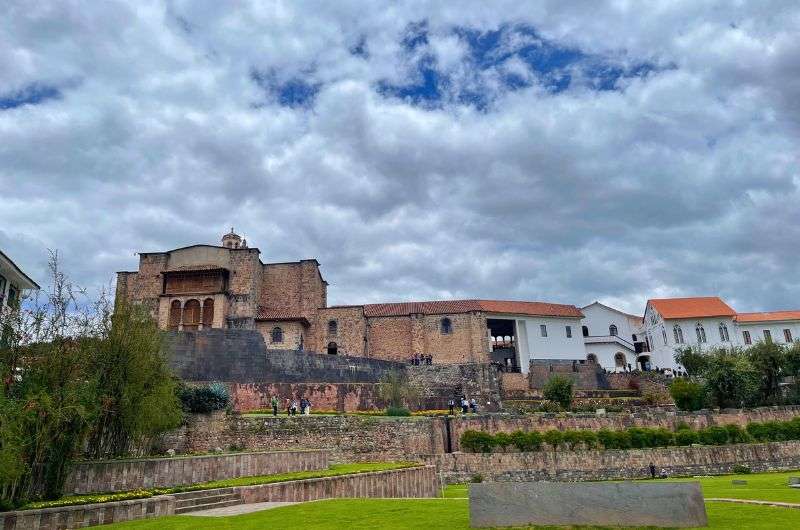
Qorikancha
- Time spent here: 1 hour
- Opening hours: Monday to Saturday 8:30 am–5:30 pm, closed Sundays
- Price: PEN 15 (USD 4) + PEN 1.30 for the bell tower
Finish your day in Cusco at Qorikancha—it was the most important temple in Cusco during the Inca Empire, dedicated to the Sun God, Inti. But don’t expect to find the temple, the Spaniards had other plans for it and what you’ll find now is mainly a Christian church
When the Spaniards took over in Peru (which I think really helped Peru in the long run), they took Qorikancha’s Temple of the Sun apart and used the stones for their own little building projects (ok this was pretty shitty of them). Most of the stones were used to build the Convent of Santo Domingo, which is the church that now sits right on top of Qorikancha’s base. So, when you get to Qorikancha, know that the church is the new building and the stone walls on the bottom are the Inca leftovers.
The walls of Qorikancha were once covered in gold, with golden statues all around. The Spanish were fascinated by all the bling, and when they captured the last Inca leader, Atahualpa, in 1533, the Incas paid the ransom for him in gold from Qorikancha.
You’ll need at least an hour for the church and the museum. No gold-plated walls anymore, but you can still get a sense of its former glory.
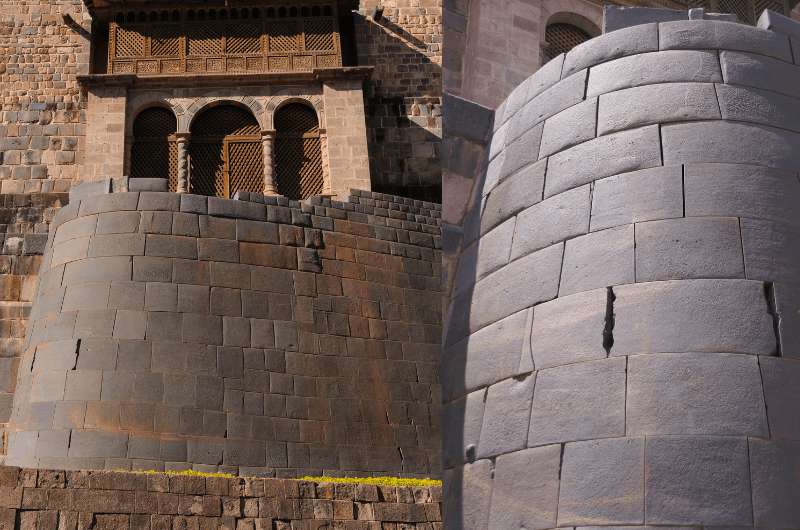
The base of the church is made out of Inca stones from the original Qorikancha—you can clearly see how well they’ve stood the test of time!
Qorikancha is right in the center of Cusco, so you’re still walking distance for everywhere and you can take the afternoon off if you’ve had enough excitement for the day. Maybe you need to rest up for tomorrow—you’re heading from Cusco to Sacred Valley! Get ready to be stunned. Stunned, I tell ya! It’s so beautiful.
Who am I kidding, nobody in their right mind spends half a day in Cusco doing nothing. Unless altitude sickness got you, in which case, I understand. I mean I pushed through, but I get that not everyone has the mettle to do so (not me curled up in a ball on my hotel bed later in the evening!).
Day 2, stop 4: Qenco Inca ruins
You can see the location of all of the Inca ruins on Google Maps
How to visit the Inca ruins in Cusco
You’ll need to hop into your rental car or call a taxi at this point because it’s time to explore some Inca ruins around Cusco! Qenco is right on the outskirts of Cusco while Tambomachay and Puka Pukara are about 10 minutes by car (in the same direction as Qenco).
It may seem like a lot to cover in one afternoon, but don’t fret—you’ll be content with 30 minutes at each site. A water worship center, a mummification area, and an entry checkpoint into Cusco are what you’ll be seeing, but they are small sites with not a huge amount to see.
First up—Qenco.
- Time spent here: 30 minutes
- Opening hours: Open daily 9 am–6 pm (times may differ based on time of the year)
- Price: Covered by Cusco Tourist Ticket Circuit 1
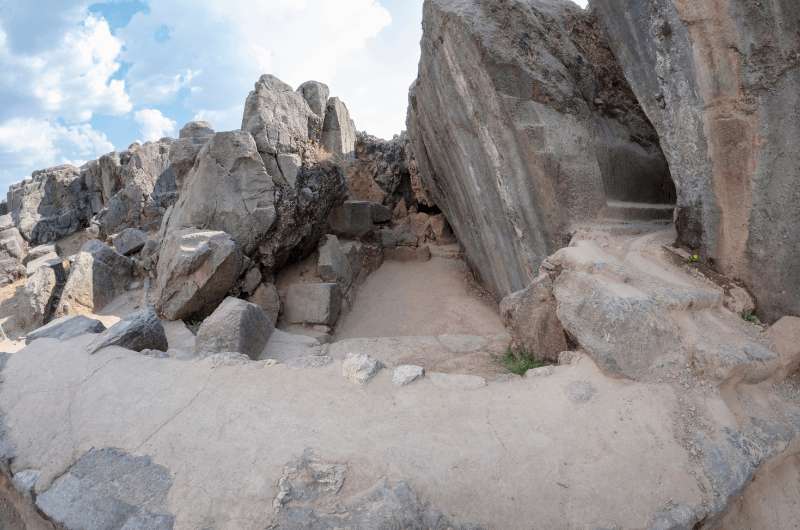
Qenco: The entrance to the rooms cut into the rocks
In Qenco, you’ll see great examples of megalithic stone cutting and shaping, one of the Incas’ specialties. Unlike most other Inca ruins though, they used the rocks that were already there are cut tunnels and passages right into the rock. So, at first glance, it really looks just like a pile of rocks. But then you go inside…
It is likely where sacrifices and mummifications took place, and you’ll be able to walk between the high walls and into “caves” to see some alters. There are great views of Cusco from Qenco, so that’s also a bonus.
The ruins are crowded and not very big, so you’ll be ready to move on in half an hour.
There isn’t much written on the signs, so read up before you go.
Day 2, stop 5: Tambomachay
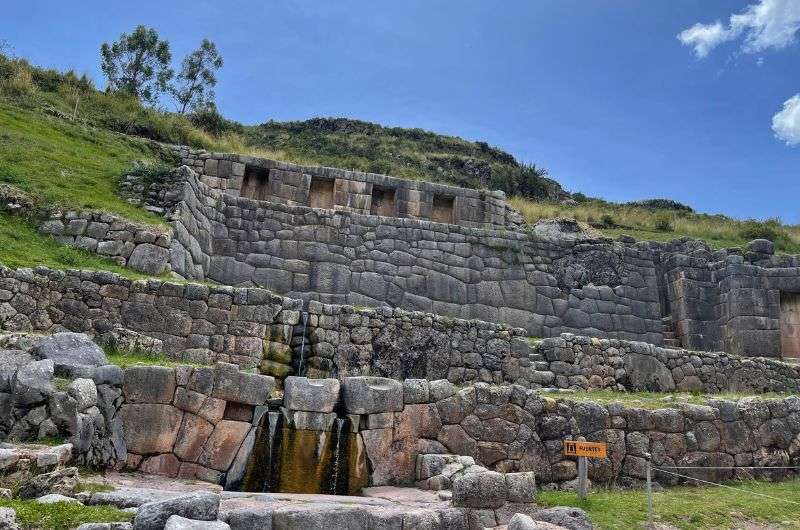
Tambomachay
- Time spent here: 30 minutes
- Opening hours: Open daily 9 am–6 pm (times may differ based on time of the year)
- Price: Covered by Cusco Tourist Ticket Circuit 1
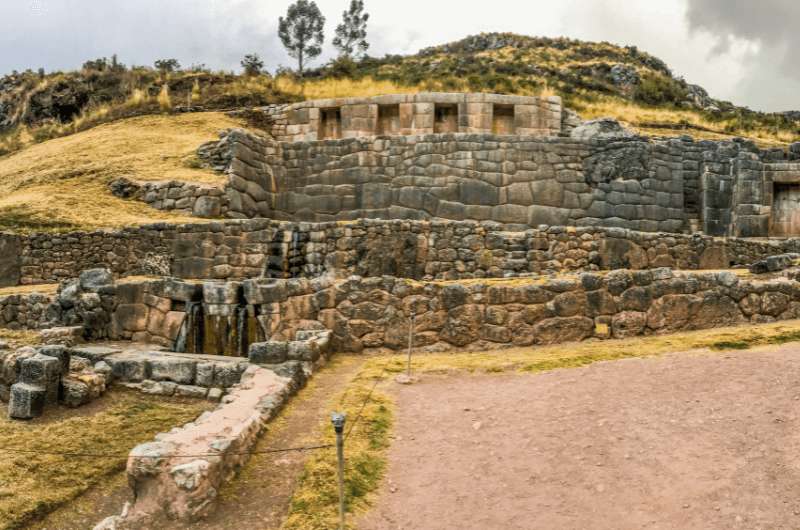
The water worship center of Tambomachay
Next, drive 11 km (7 mi) north from Qenco to Tambomachay. The archeological site is a short walk from the parking lot.
Tambomachay is a water worship center, or perhaps an Inca spa, who knows? You’ll learn if you didn’t know this already, that the Incas were great at irrigation and controlling the flow of water sometimes over huge distances.
There are three stone terraces at Tambomachay that are built over natural springs. The water from the springs would feed the canals, aqueducts, and waterfalls that were built into the terraces. They still flow today.
We especially liked the tree-lined avenue. The number of sellers that were lining it was also incredible, but not in a good way.
Again, it’s not a large site, so you won’t spend much time here. 30 minutes and you’re done.
Day 2, stop 6: Puka Pukara
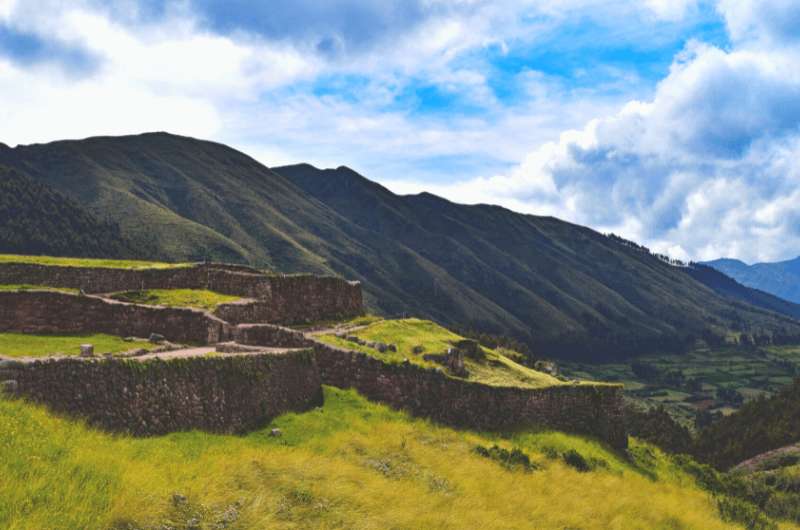
Puka Pukara
- Time spent here: 30 minutes
- Opening hours: Open daily 9 am–6 pm (times may differ based on time of the year)
- Price: Covered by Cusco Tourist Ticket Circuit 1
Finally, 1 km (0.6 miles) back towards Cusco from Tambomachay is Puka Pukara, the Inca fortress that served as an entry checkpoint into Cusco. There’s a small parking area near the entrance.
At sunset, the walls look red, which is where the name Puka Pukara, which means “Red Fortress” in Quechua, comes from.
There isn’t much except the walls left at Puka Pukara, so you won’t need too much time there, either, but the views of the surrounding mountains and valleys are something to be appreciated. Especially as you finish your day in Cusco and you now regret not having more time.
You won’t find any information at Puka Pukara besides some basics, so again, read up before you go.
Tip (?): There are horseback tours available to the Inca ruins close to Cusco. That could be an interesting twist on it for those of you not allergic to horses like me.
In the evening, have a pisco sour or three at the Hilton’s Garden Grille Restaurant. Remember the Garden Grille has the most fantastic views over Cusco! You know that already though, because you’re staying at the Hilton Garden Inn Cusco, right?

Day 3 of Cusco itinerary: Cusco to Sacred Valley day trip!
You can see the route with all the stops of the day on Google Maps
Main sites visited on day 3: Pisac, Chinchero, Maras, Moray, Ollantaytambo
Restaurant tips: El Maqt’a (local restaurant) | MIL Food Lab and Interpretation Center
Hotel recommendations: Vertical Sky Luxury Suites near Urubamba| Hilton Garden Inn Cusco
Further reading: A First-timers Guide to Sacred Valley
I hope you’ve had enough time to get your body up to speed with the altitude of Cusco and Sacred Valley, because today, you’ll be covering a lot of ground! You'll need an early wake-up call to make the most of today. Don’t be tempted to skip Sacred Valley, it is absolutely incredible.
I strongly urge you to rent a car in Cusco for this part of your itinerary, because you’ll have flexibility that no tour or even paid driver can give you.
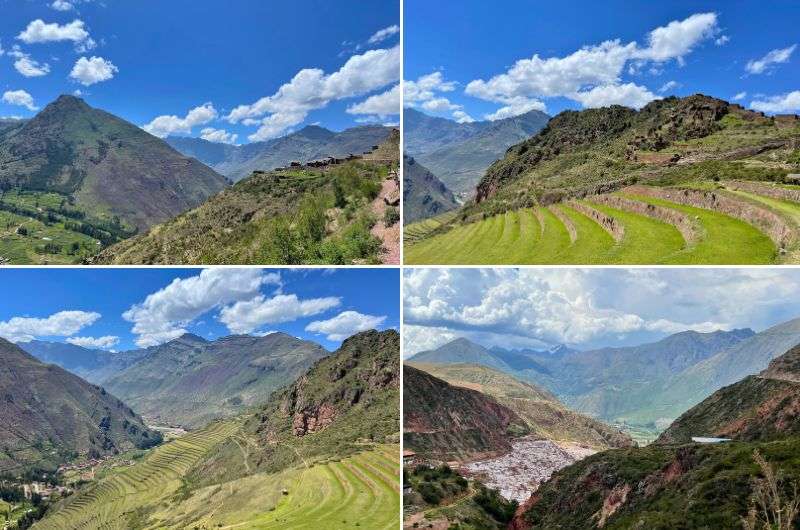
Just in case you were thinking about leaving out Sacred Valley because you’re short on time… don’t.
Today, you’ll be driving through the heart of the Inca Empire—Sacred Valley. It’ll be a whole lot of Inca ruins, but maybe even more exciting is the scenery. Peru’s Andes Mountains are awe-inspiring, and you’ll be awe-ing at every stop you make.
Tip: Start early, because you have a lot of driving and exploring ahead of you.
I have a whole article about the Top 9 Places to See in Sacred Valley, so you can get all the details about each stop there.
Day 3, stop 1: Pisac Inca ruins and the best views in Sacred Valley!
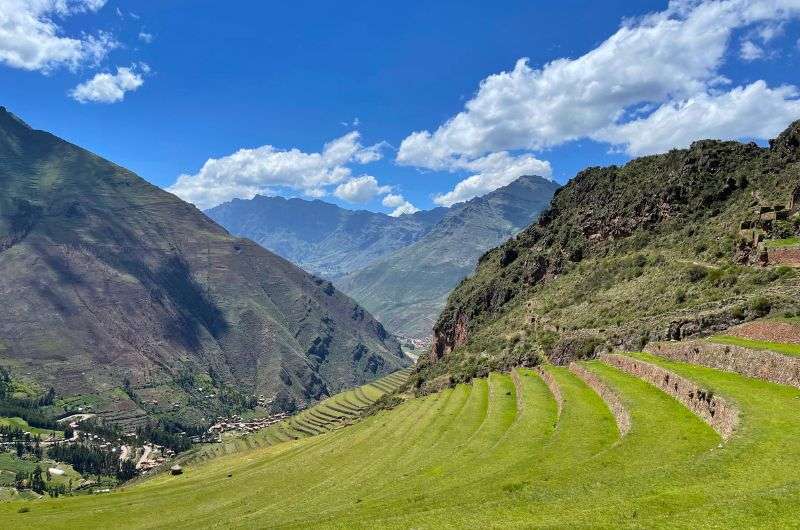
The first stop of your trip from Cusco to Sacred Valley: the Inca ruins of Pisac
- Distance from Cusco: 40 km (25 mi), 1-hour drive
- Time spent here: 2 hours
- Opening hours: Daily 8 am–4:30 pm
- Price: Cusco Tourist Ticket Circuit 3

First, drive 40 km (25 mi) to Pisac. It’s not far, but you’ll need an hour for the trip—this isn’t a highway! You’ll have extra fun trying to dodge crazy Peruvians coming straight at you at light speed. Extra points if they're in a big truck. Driving in Peru is ok once you get used to it, but you will still spend half your time with eyes wide open (and sometimes shut).
Once there, you might overlook the Inca ruins and just stare at the views. They might be best in all of Sacred Valley. Pisac is a former Inca fortification that sits at about 3,000 m (9,800 ft), so it’s like you’re getting views of the views, they’re just phenomenal.
Pisac probably served as protection for the Sacred Valley from the east, just as Ollantaytambo guarded it from the west.
The Pisac archeological site is about 3.5 km (2.2 mi) north of town, and you can drive to it. Otherwise, you can take the 2-hour trek out of Pisac town on your own two feet. It’s steep!
Count on spending 2 hours exploring Pisac.
Day 3, stop 2: The picturesque town of Chinchero
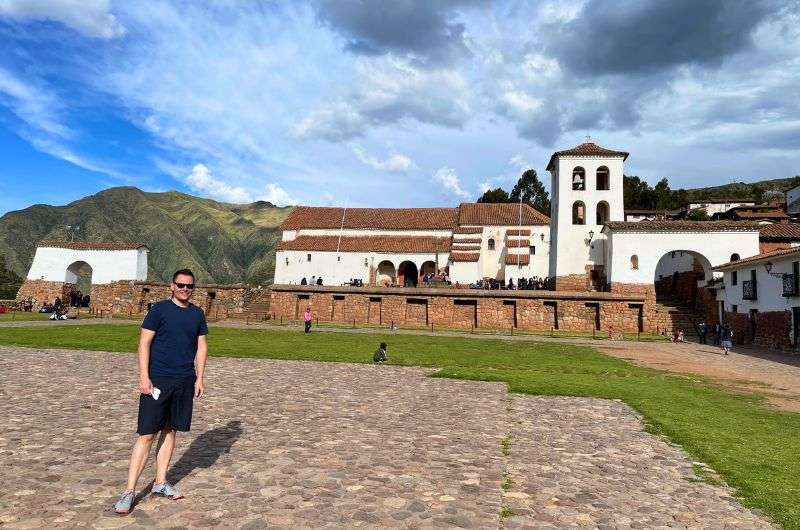
Visit the historical center of Chinchero
- Distance from last stop: 75 km (45 miles), a 1.5-hour drive
- Time spent here: 1 hour
- Opening hours: Daily 7 am–6 pm
- Price: Cusco Tourist Ticket Circuit 3
Chinchero is a picturesque town at a respectable altitude of 3,765 m (12,350 ft). Come here for the views of the surrounding scenery and the vibe—people here still wear traditional dress as they go about their business.
The drive between Pisac and Chinchero is 1.5 hours and about 75 km (45 miles).
Visit on a Sunday and experience the vibrant Sunday market at the main square. The Quechuas are known for their weaving techniques, so go ahead and buy some souvenirs! You can also take weaving classes. You can also buy some tasty Peruvian food, but again, the altitude brought down the score of this taste test!
There are also terraced Inca ruins at Chinchero that’ll feel completely abandoned compared to other Inca ruins you’ll be visiting in Peru. They’re located on the north side of the town, but you probably won’t have enough hours in the day to see them. Just stick to the town center.
You need a ticket to enter the main plaza with the church and the Inca ruins. Chinchero is included in the Cusco Tourist Ticket Circuit 3 (and of course in the 10-day complete ticket).
My secret tip for a very local lunch in Sacred Valley!
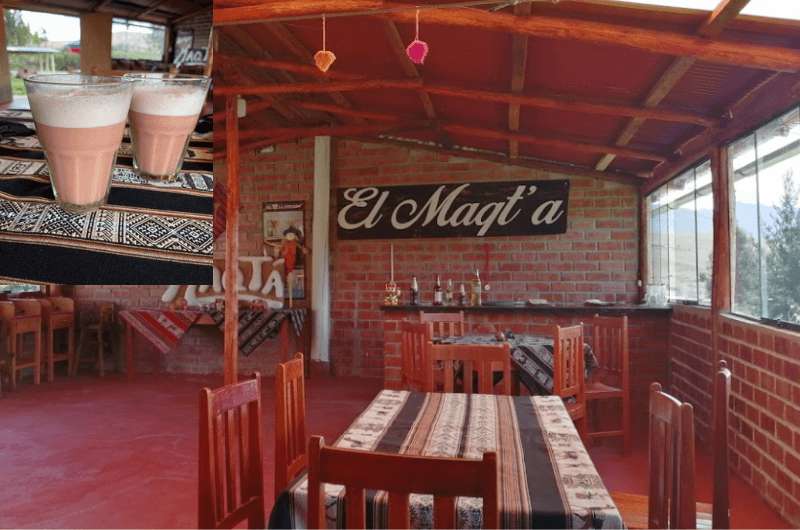
El Maqt’a Restaurant : a super local restaurant on the road between Chinchero and Urubamba
Here’s my secret tip: Make sure to stop by the very local and very cute restaurant called El Maqt’a. It’s a gem we found on the road between Chinchero and Urubamba. See this map for the location of El Maqt’a and don’t expect them to have a website, but do expect the pink corn beer, chicha.
Day 3, stop 3: Moray, the Inca’s experimental laboratory
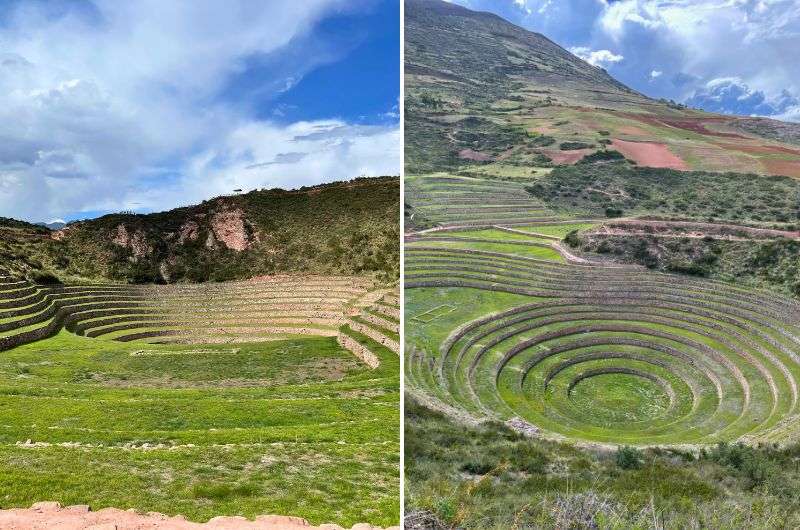
Moray experimental lab
- Distance from Chinchero: 25 km (15 miles), a 40-minute drive
- Time spent here: 1 hour
- Opening hours: Daily 7 am–6 pm
- Price: Cusco Tourist Ticket Circuit 3
Continue driving 15 minutes from El Maqt’a to Moray (or 45 minutes from Chinchero), where the Incas experimented with growing different crops, and the circular sunken terraces are a very cool leftover of that agricultural laboratory.
It’s these high (higher than you’d think!) steps where the difference in temperature between the top and bottom levels was 5°C (9°F). They would bring in soil from different parts of Peru to mimic different conditions on different levels, allowing them to work out which microclimate works best for whichever crop. So, something along the lines of: hey look, this red potato grows best on level 2, but this large variety died on level 4. Super cool, right?
You will spend up to an hour at Moray.

Day 3, stop 4: Maras salt evaporation pools
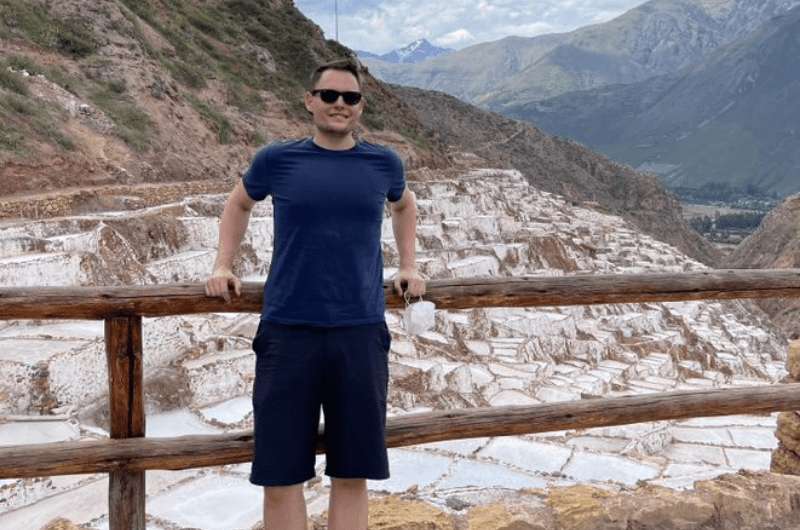
Lookin’ good at the Maras salt pools
- Distance from last stop: 16 km (10 miles), a 25-minute drive
- Time spent here: 30 minutes
- Opening hours: Daily 8 am–5 pm
- Price: PEN 20 (USD 5) Not included in the Cusco Tourist Ticket!
Twenty-five minutes further down the road from Moray you’ll be stopping at Maras, which is a whole side of a mountain filled with thousands of salt evaporation pools.
The Maras salt pools are kept by the local families, and there is one pool per family based on family size. If a new family comes to Maras, they are given a salt pond to take care of for their personal use. At any given time, there are many empty salt pools just waiting for someone new to claim them. So, if you ever considered moving to Peru…
I thought the most interesting bit was the tiny, salty stream that you can see coming out from the inside of the mountain that feeds all of these pools. There’s this buildup of salt around it. Incredible that this little thing has been keeping the pools alive for so long.
In my article about Moray and Maras, I explain what the individual layers of salt are used for and how the color changes.
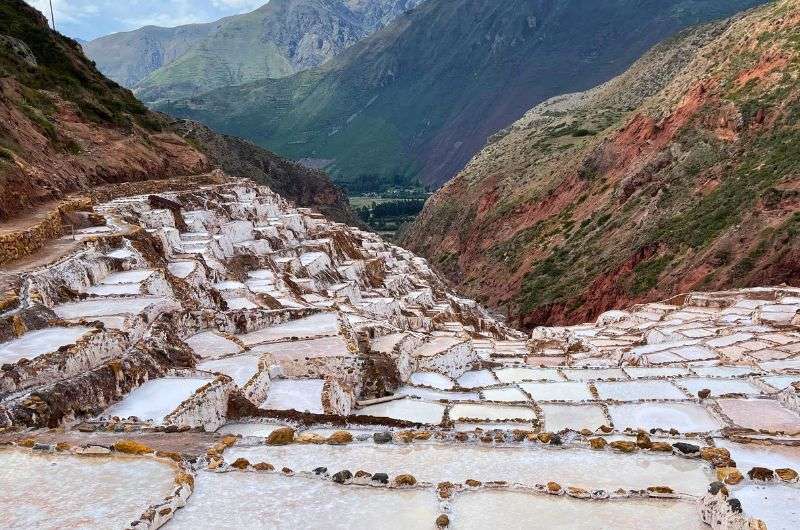
Look at all those salt evaporation pools!
It used to be allowed to walk through the salt pools, but nowadays there are just viewing platforms and walkways that take you to several different levels, so you still get a good look. It’ll only take you a maximum of 30 minutes.
As you might expect, there are souvenir shops selling everything salt-related. Try the salted chocolate, it was fantastic!
This is the only spot where you’ll be buying a separate ticket at the entrance (bring cash) since it isn’t part of any of the Cusco Tourist Ticket circuits. The cost is PEN 20 (USD 5).
Day 3, stop 5: Ollantaytambo, the best-preserved Inca ruins in Peru!
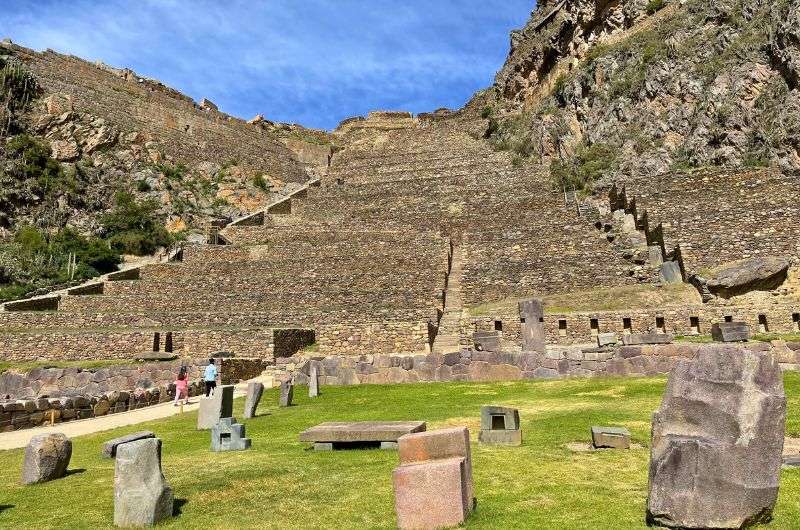
Ollantaytambo Inca ruins
- Distance from last stop: 36 km (22 miles), a 45-minute drive
- Time spent here: 1–2 hours
- Opening hours: Daily 7 am–5 pm
- Price: Cusco Tourist Ticket Circuit 3

Last but not least, drive 45 minutes from Maras to Ollantaytambo. This is the place where you’ll alight your train when you’re visiting Machu Picchu, so it makes sense to stay the night there if that’s your plan for tomorrow.
Note: If I were planning your Machu Picchu itinerary, that’s certainly what I’d do—stay the night in Ollantaytambo. Wait, I already planned your trip to Machu Picchu, how silly of me to almost forget to share that piece of information.
Anyway, let’s stick to your Cusco 3-day itinerary: The Inca ruins at Ollantaytambo are some of the best-preserved in all of Peru. They’re huge, probably more expansive than the ones at Machu Picchu. The ruins copy the mountain terrain, so you’ll be doing quite a bit of climbing up and down. But you know what climbing up gets you? Views!
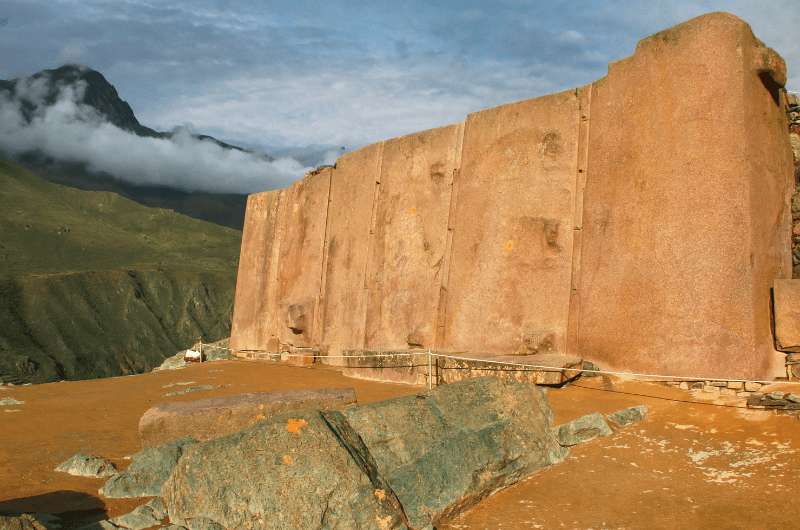
The Wall of the Six Monoliths at Ollantaytambo Inca ruins
You can get a guide or just wander around on your own. A visit will take you 1–2 hours.
Ollantaytambo is part of Cusco Tourist Ticket Circuit 3 and the complete 10-day ticket.
If you’re heading back to Cusco and not Machu Picchu, the drive from Ollantaytambo is about 1 h 20 mins long.
And that’s it. That’s what you should do in Cusco for 3 days. Not adding a day trip from Cusco to Sacred Valley seems unfathomable to me, it is a MUST. As an alternative (like if you set aside extra time just for Sacred Valley), you could head out on a day trip to Rainbow Mountain or one of the alternative but also colorful mountains near it.

And finally, a few fun facts and FAQs about Cusco:
1. Cusco’s altitude is higher than that of Machu Picchu!
Cusco is a high-altitude destination and causes many travelers trouble with altitude sickness. Altitude sickness is a big deal and you don’t want to underestimate it. Read my guide on altitude sickness to learn what it is, how to prevent it, and what to do if you fall victim to it.
You’d think Cusco can’t be that high up since it sits at the foot of the mountains… but you’d be wrong. Cusco is a 1 km (0.6 mi) higher altitude than Machu Picchu! Let that sink in. That’s 0.6 miles of beautiful, extra oxygen in Machu Picchu.
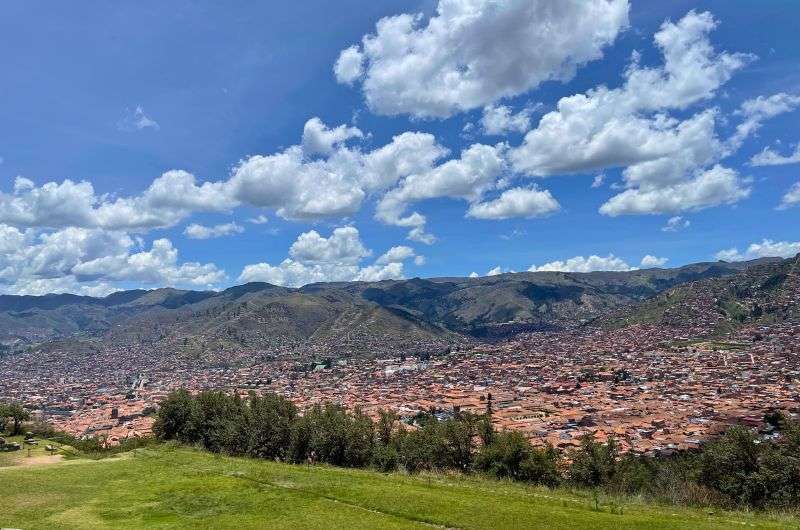
Be prepared for altitude sickness in Cusco—it's way higher up than Machu Picchu!
2. Is Sacred Valley higher than Cusco?
Some places in Sacred Valley, like Chinchero and the ruins at Pisac, are higher up than Cusco. Overall, the entire region is high-altitude, so it’s important to keep potential altitude sickness in mind when you are traveling on this itinerary. And don’t even get me started on one popular Cusco day trip—Rainbow Mountain!
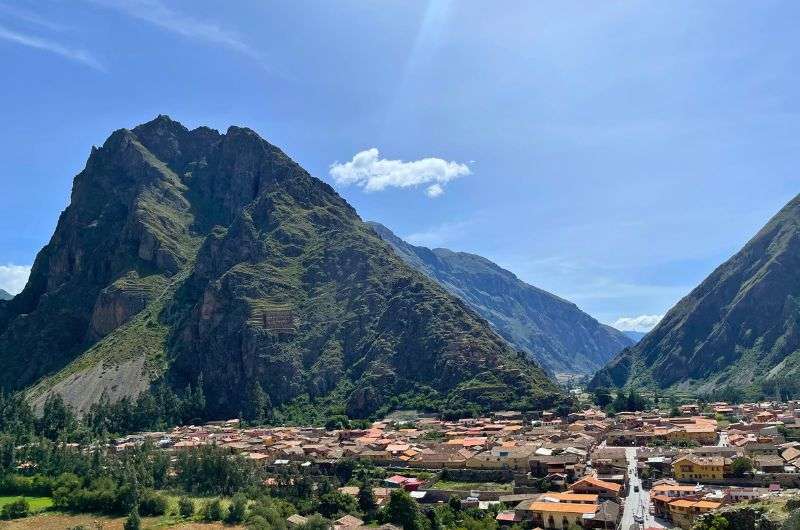
In Peru, prepare to get high. Not on the coca plant, but it certainly can help you against altitude sickness, so keep it handy
Here are some sample altitudes to give you a better idea of what you’ll be dealing with:
- Cusco’s altitude: 3,400 m (11,000 ft)
- Machu Picchu altitude: 2,430 m (7.900 ft)
- Arequipa’s altitude: 2,300 m (7,600 ft)
- Chinchero altitude: 3,765 m (12,350 ft)
- Rainbow Mountain altitude: 5,200 m (17,000 ft) !!
Tip: Do you know what the worst idea is? Flying to Cusco directly from Lima, which is at sea level. Ouch! We took some time in Arequipa first to ease ourselves in and I still spent my first days in Cusco as white as a wall.
3. What is the Cusco Tourist Ticket?
The Cusco Tourist Ticket (Boleto Turistico del Cusco) is a ticket that includes the various attractions in Cusco and Sacred Valley. It is necessary to have a Cusco Tourist Ticket to get into everything you could ever want to see and has 4 variants. You can’t buy tickets to these places separately, so not only is the Cusco Tourist Ticket worth it, but you literally have no other choice if you want to see some of these spots.
4. Cusco Tourist Ticket circuit options
The general ticket (circuit 1) includes almost everything in Cusco and the Sacred Valley, is valid for 10 days, and costs PEN 130 (USD 35). But that is overkill since you are only visiting Cusco for 3 days.
The complete 10-day ticket includes: Sacsayhuaman, Qenqo, Puca Pucara, Tambomachay, Museum of Contemporary Art, Regional Historical Museum, Museum of Popular Art, Qoricancha Museum (but not the Qorikancha site), Qosqo Center for Native Art, Monument to the Inca Pachacuteq, Pikillaqta, Tipón, Pisac, Ollantaytambo, Chinchero, Moray
The other more limited circuits that are valid for 2 days and cost PEN 70 (USD 19).
Cusco Tourist Ticket Circuits:
Circuit 1: Sacsayhuaman, Qenqo, Puca Pucara, Tambomachay
Circuit 2: Museum of Contemporary Art, Regional Historical Museum, Popular Art Museum, Qosqo Center for Native Art, Monument to the Inca Pachacuteq, Pikillaqta, Tipón, Qoricancha Museum (only)
Circuit 3: Pisac, Ollantaytambo, Chinchero, Moray
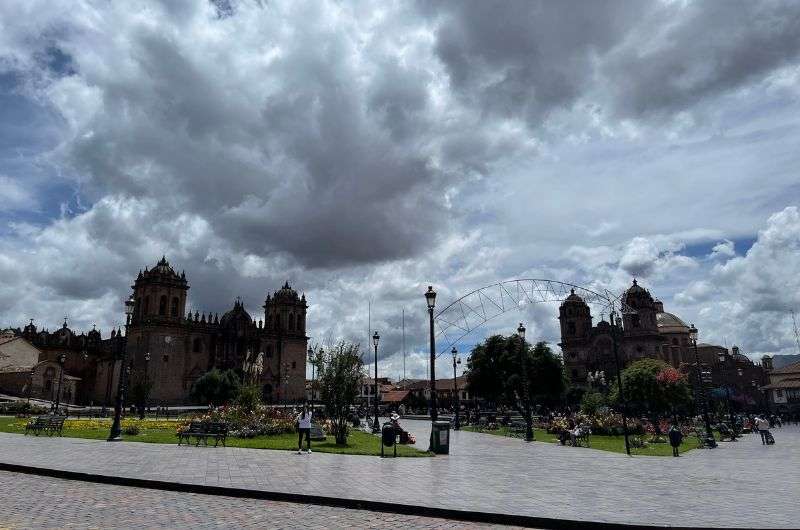
Plaza de Armas
5. How to buy the Cusco Tourist Ticket? Not online
Tickets can only be bought in person either at any of the sites that accept the ticket or at the Cusco ticket office at 103 Avenida del Sol in central Cusco or at the Directur Tourist office on Calle Mantas in Cusco. Don’t worry, they don’t limit the number of tickets sold.
You need your passport to buy the Cusco Tourist Ticket and to use the ticket. They are non-transferable, and your name will be written on your ticket.
A lot of times only cash is accepted at the ticket desks, so don’t rely on your credit card.
Also good to know is that if a site is part of any of the tickets, you can’t just buy entry into that one site. You will need to buy a circuit ticket even if you have no interest in seeing anything else on that circuit.
This post contains affiliate links. I earn a small commission if you make bookings through my links, at no additional cost to you. This helps keep this blog free, thank you!




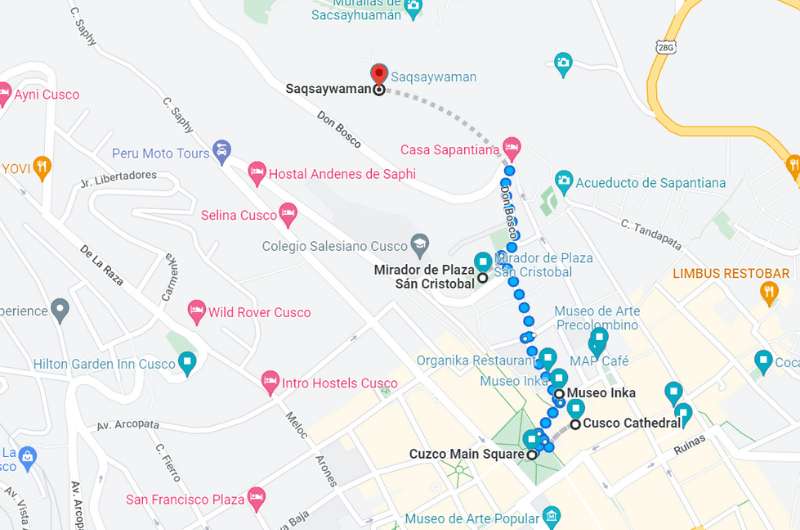
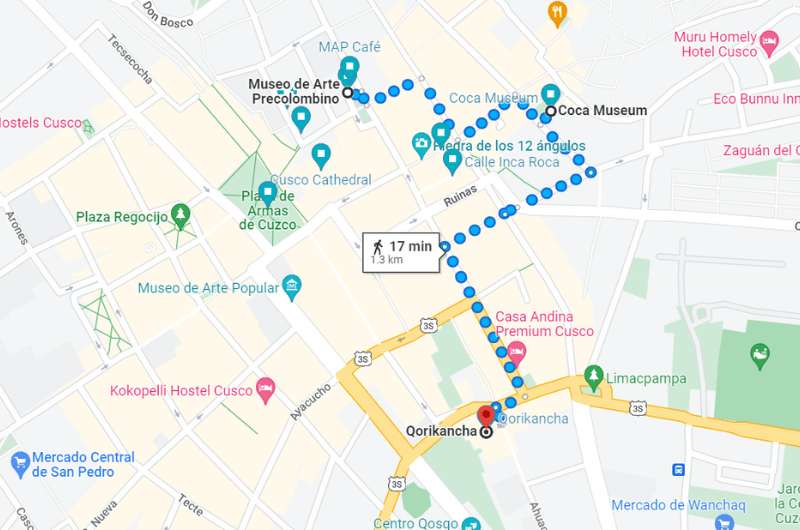
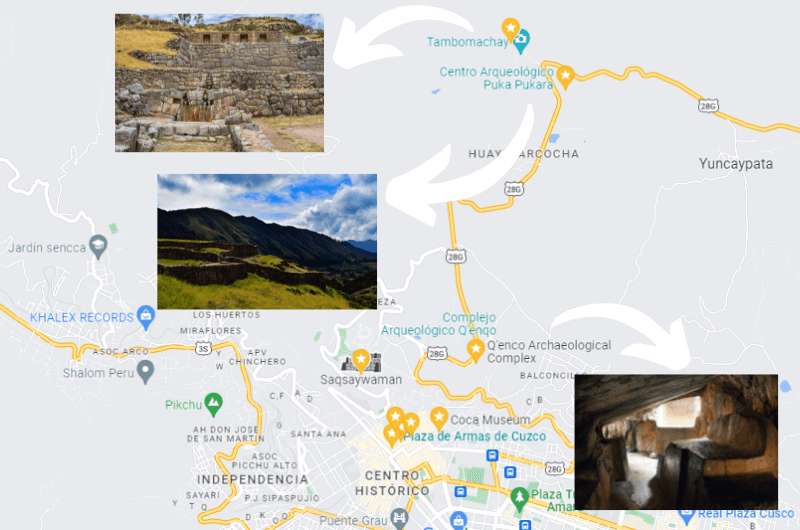
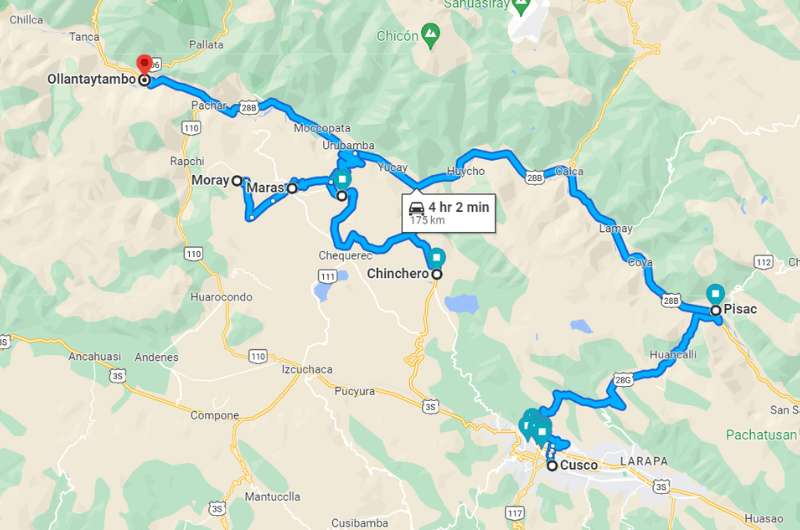
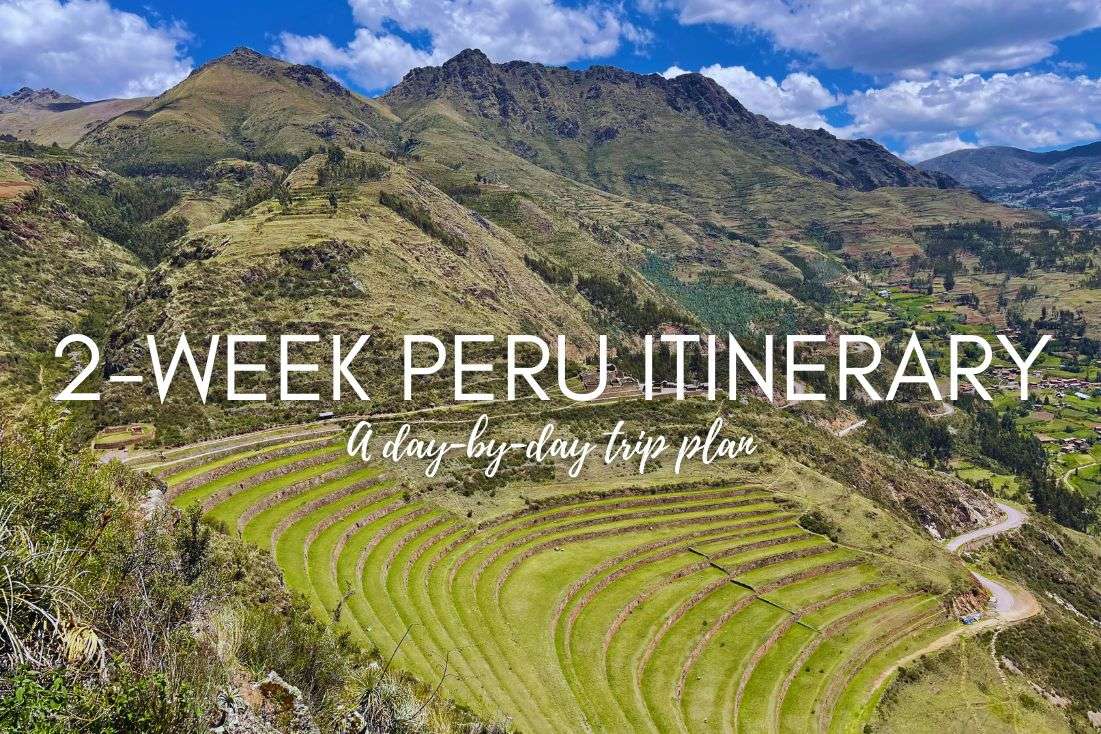
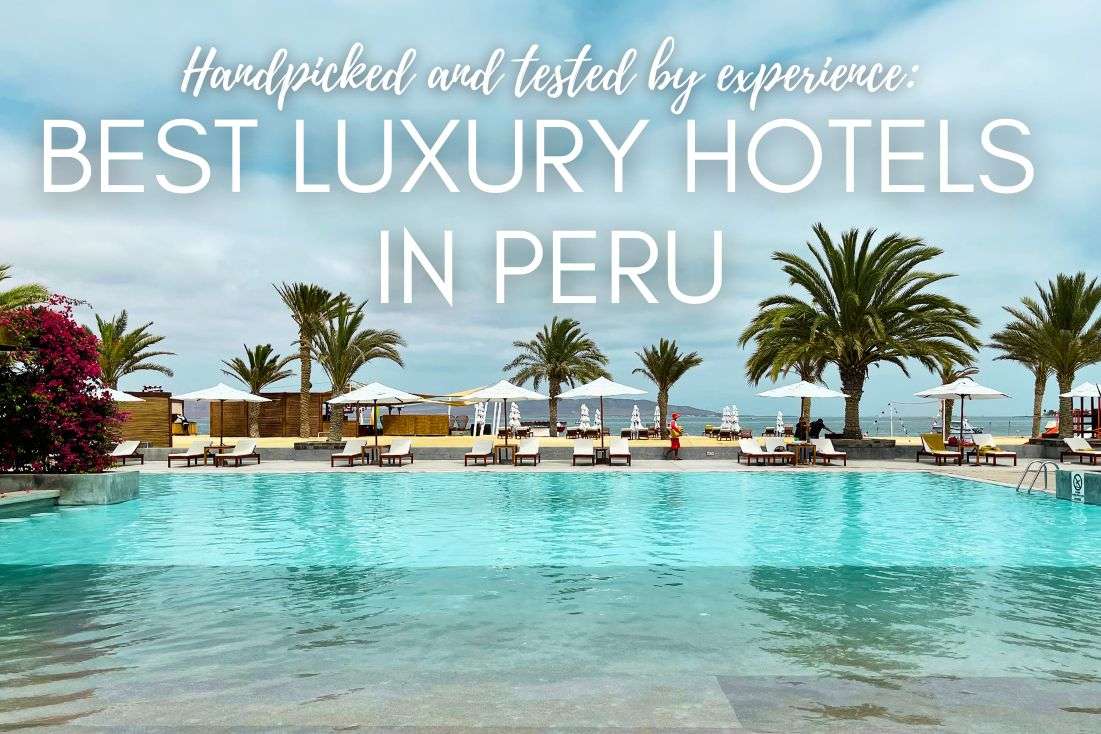
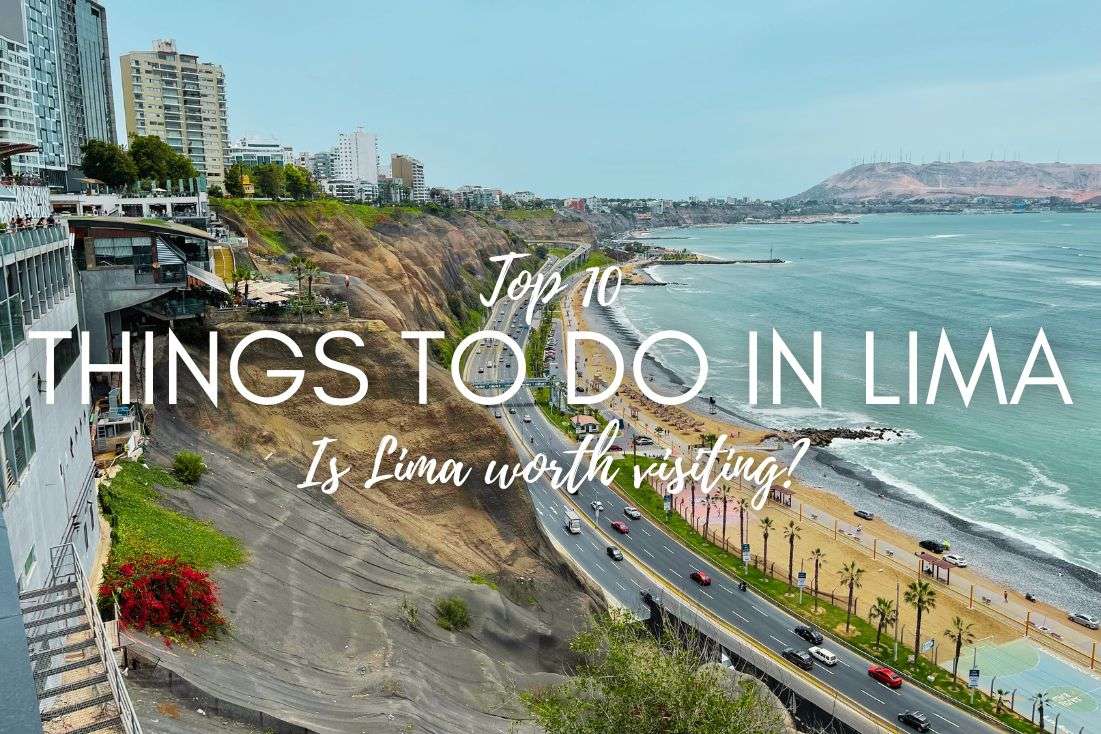



Comments | Thoughts? Give us a shout!